












 NICK CRUMPTON and GAVIN SCOTT
DR
NICK CRUMPTON and GAVIN SCOTT
DR
First published 2023 by Nosy Crow Ltd The Crow’s Nest, 14 Baden Place, Crosby Row London, SE1 1YW
Nosy Crow Eireann Ltd
44 Orchard Grove, Kenmare Co Kerry, V93 FY22, Ireland
www.nosycrow.com
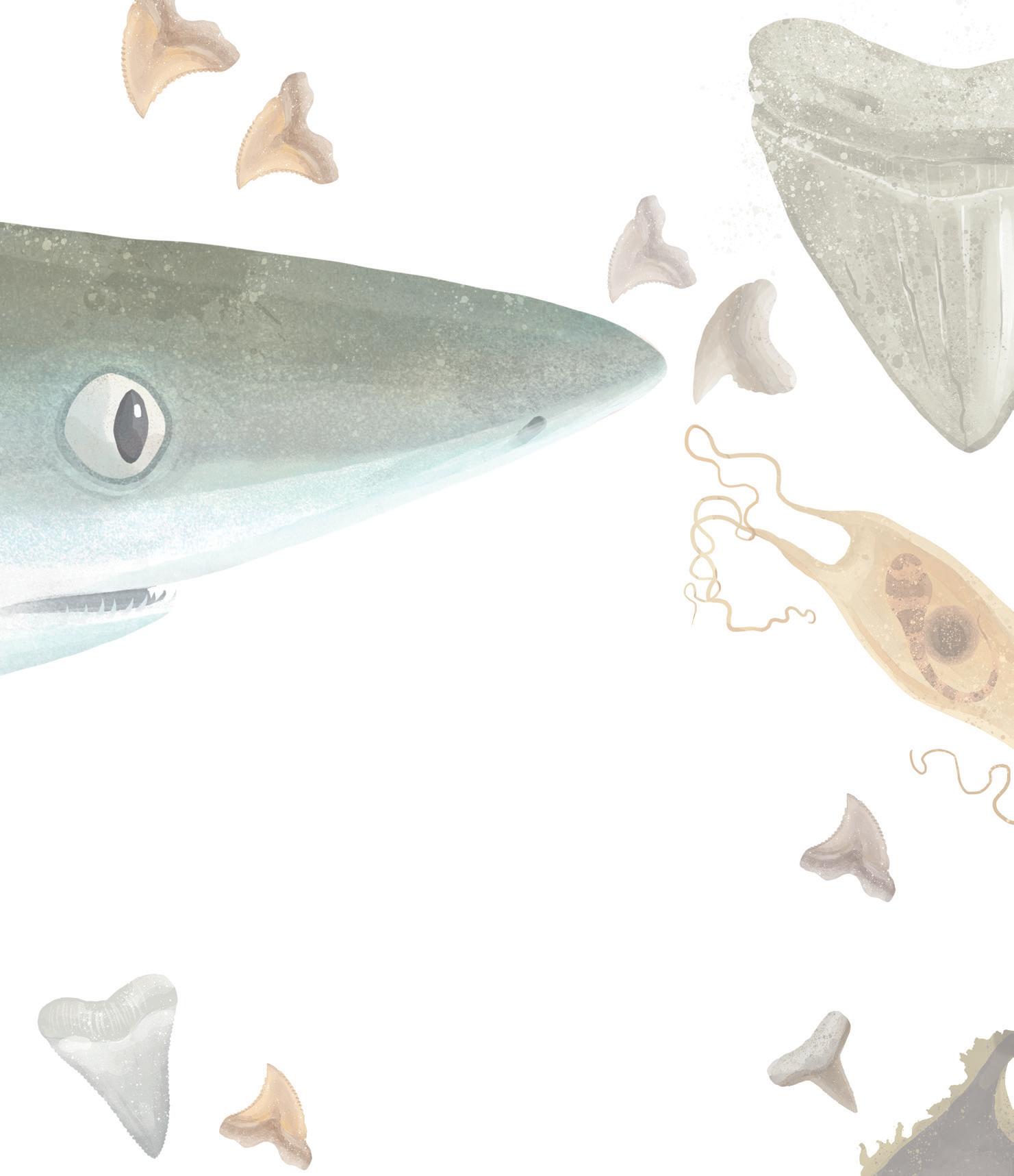
ISBN 978 1 83994 451 2
Nosy Crow and associated logos are trademarks and/or registered trademarks of Nosy Crow Ltd.
Text © Nick Crumpton 2023 Illustrations © Gavin Scott 2023
Very special thanks to Helen Scales, Amani Webber-Schultz, David Shiffman, Tristan Guttridge and Lucy Harding. – N. C.
The right of Nick Crumpton to be identified as the author and Gavin Scott to be identified as the illustrator of this work has been asserted. All rights reserved.
This book is sold subject to the condition that it shall not, by way of trade or otherwise, be lent, hired out or otherwise circulated in any form of binding or cover other than that in which it is published. No part of this publication may be reproduced, stored in a retrieval system, or transmitted in any form or by any means (electronic, mechanical, photocopying, recording or otherwise) without the prior written permission of Nosy Crow Ltd.
A CIP catalogue record for this book is available from the British Library.
To all the world’s researchers, campaigners, citizens, scientists and shark super- fans helping save our planet’s amazing sharks and rays.
N. C.
G. S.
Introduction
Sharks haven’t changed for millions of years

Sharks kill lots of people
Sharks don’t look after their pups
Megalodon lives!
There’s no point to sharks
Sharks are big
Sharks only live in tropical oceans
Nothing eats sharks
Sharks don’t get on with other animals
Sharks have to keep moving to breathe
Sharks all look the same
Sharks aren’t at risk
All sharks have large, pointy teeth
Sharks live in shallow seas
Shark fin soup is good for you
Sharks all hunt the same way
Sharks’ super-smell is their strongest sense
All sharks lay eggs
The Great white shark is the fastest shark
All rays have stingers
Sharks aren’t useful
Sharks are loners
Studying sharks is dangerous
All sharks are cold-blooded
Sharks aren’t smart
We can’t help sharks
We have discovered all the sharks
Our work is done!
Glossary Index
From wasps and bats to leeches and snakes, Planet Earth is home to a whole heap of animals that have a pretty bad reputation – and because of this, a massive number of humans are scared by them, try to avoid them, or even try to kill them!
But the worst reputation of any sort of animal we share the world with probably belongs to THE SHARKS. They are, according to a huge number of grown-ups, terrifying murderers. They are snaggletoothed meat-eaters intent on killing everything that swims, including – given half the chance – any soft-skinned humans that paddle into their watery realm . . .
But do they deserve this reputation? Are they really such marine menaces?
This book is your chance to find out. It’s all about the real ELASMOBRANCHS: the amazing group of fishes that includes the sharks and their close relatives the rays and skates who, since they split from their relatives the CHIMAERAS sometime around 400 million years ago, have swum the Earth’s waterways as sleek predators, saw-jawed hunters and wide-winged filter-feeders.
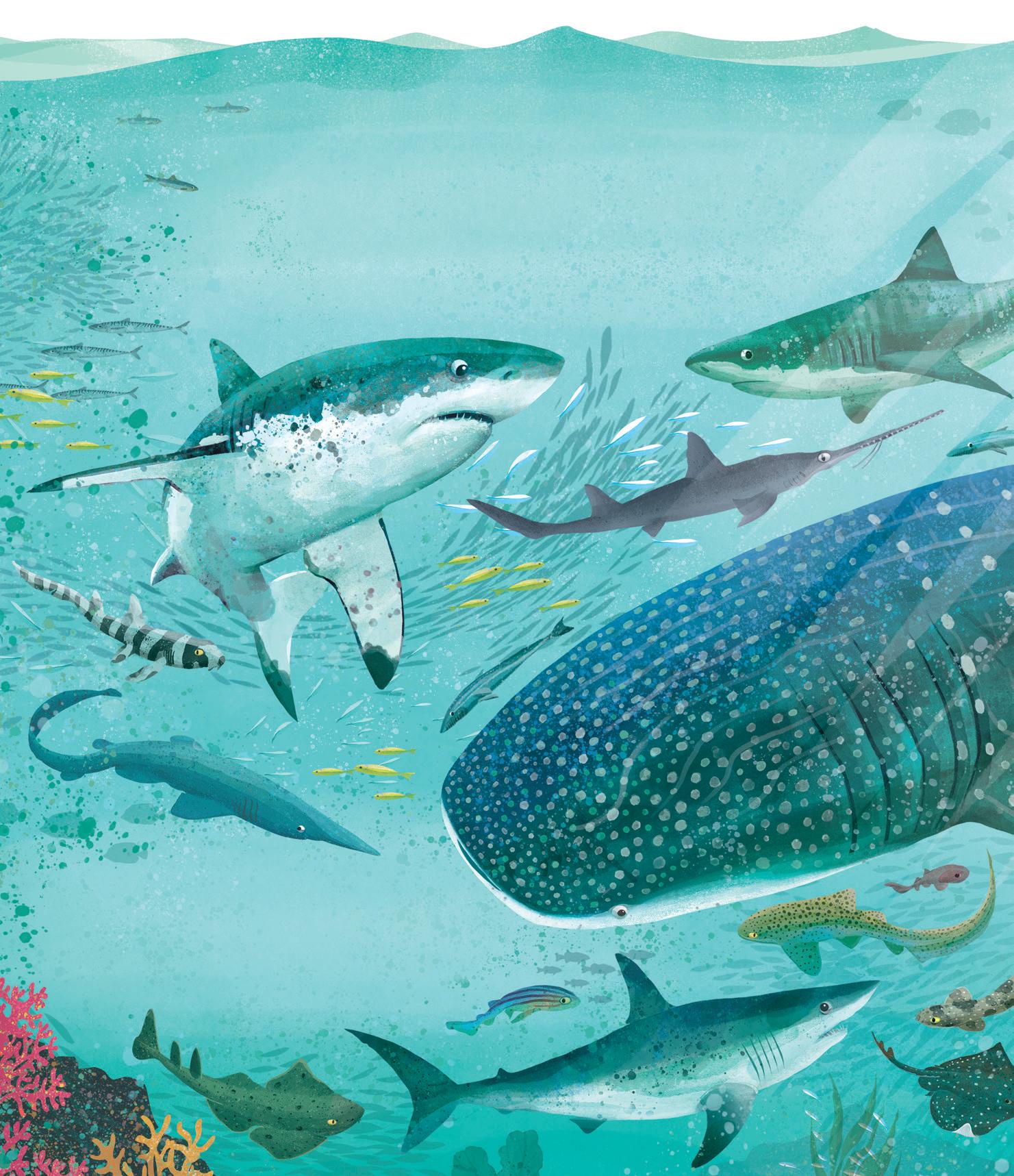
They are animals with a history that stretches far back into the world of yesterday, but they are hugely important to the seas of today. Although only about three per cent of the 34,000 species of fish in the world are sharks or rays, the world would be very different without them.
As you’ll find out, sharks don’t just chase after prey to mindlessly fill their stomachs. They clean the ocean of disease, inspire human inventions, and even help fight climate change (see page 15)!
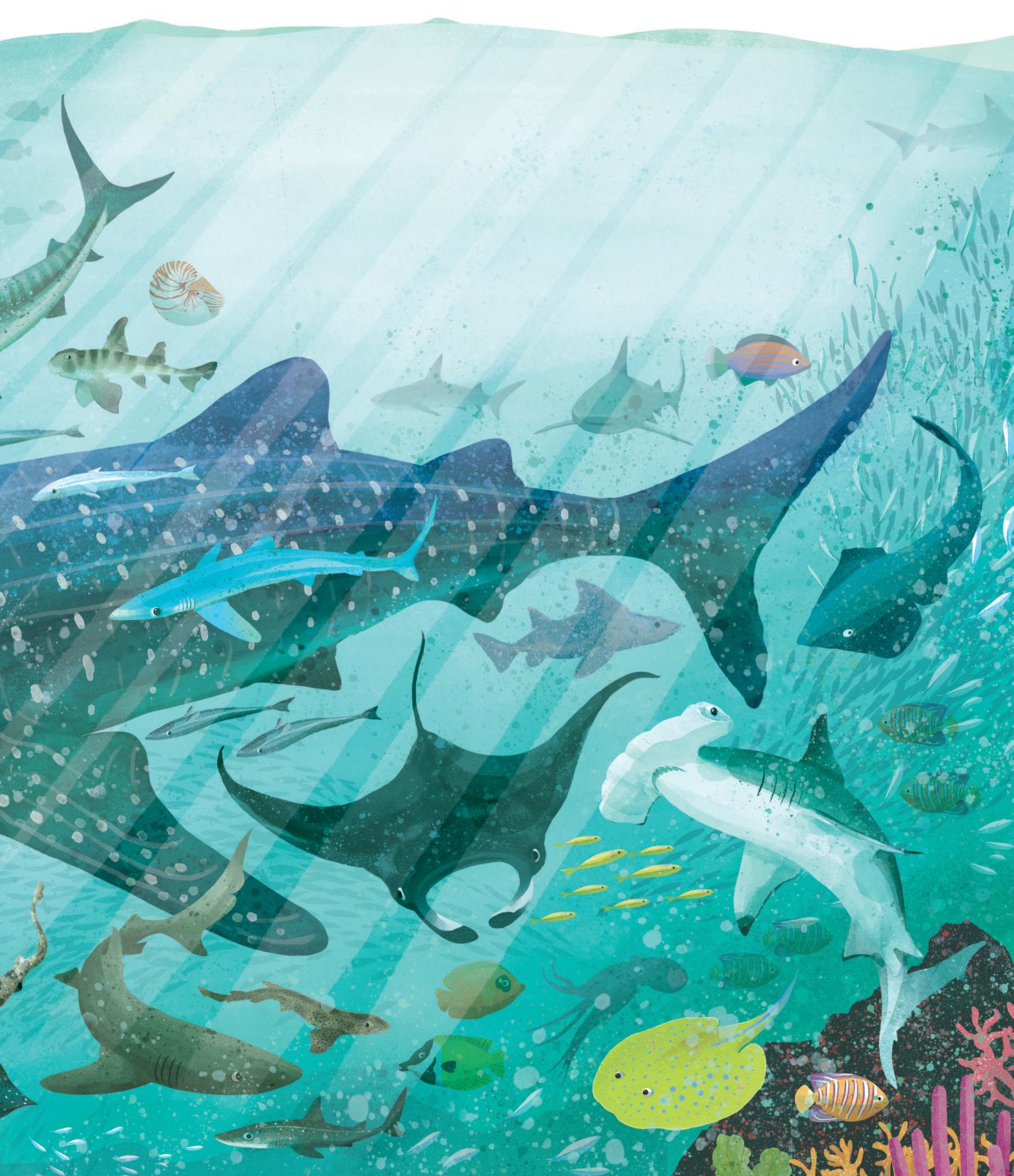
Just like every animal on Planet Earth, sharks interact with other living things in their surroundings, or environment. In fact, they help their environment stay healthy and create food for other animals to eat: they help make the world’s waters work
So, even if you suffer from an acute case of galeophobi a (that’s a fear of sharks. . .), take a deep breath and get ready to come face-to-face not with a group of dreadful monsters, but with some of the most interesting – and most misunderstood – animals in the oceans.
It’s true that the basics of ‘what makes a shark’ (like having a skeleton made of soft, bendy cartilage rather than hard bone) were found in the earliest sharks millions of years ago. But sharks have been around for such an incredible amount of time that a whole bunch of different-shaped sharks evolved as experiments on how to catch food, how to move and how to find mates. Not all of these species survive today but, yikes, there have been some pretty odd-looking sharks in the past . . .
Stethacanthus Falcatus
Harpagofututor
The earliest sharks and their soft-skeletoned relatives (all together called the ‘Chondrichthyes’) shared the seas with the terrifying bone-toothed PLACODERMS . It wasn’t until a huge mass extinction at the end of the Devonian period wiped these strange armoured fish from the water that sharks had a chance to take their place and evolve into many shapes and forms.
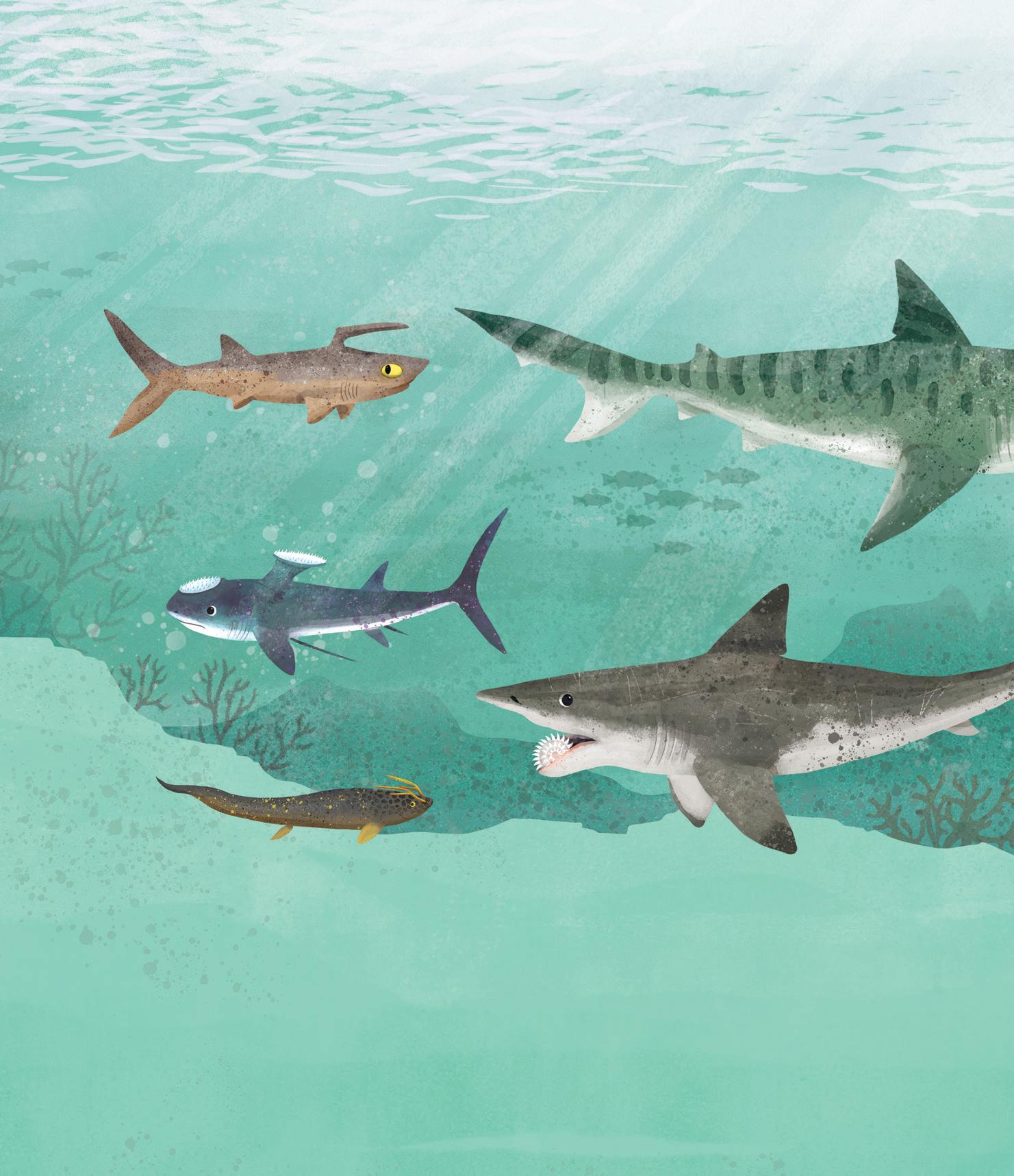
The Permian period was when things got a bit . . . loopy. Especially when it came to shark teeth. Palaeontologists weren’t even sure how the spirals of teeth, called ‘whorls’, sat in the mouths of HELICOPRION and PARAHELICOPRION until just a few years ago. They now think that HELICOPRION used the whorl of teeth in its lower jaw to slash soft-bodied, squid-like prey animals whereas PARAHELICOPRION used its upper and lower teeth whorls to catch and eat harder prey.
359–299 MILLION YEARS AGO 299–252 MILLION YEARS AGOSo, sure, some sharks today, like the SIX-GILLED SHARKS, haven’t changed a lot since the Jurassic period, but the enormously long history of shark evolution has meant that the fossil record is full of strange characters unlike anything alive today. And there are so many more still to discover . . .
After the world suffered the largest mass extinction of all time at the end of the Permian period, sharks like the spike-headed, ribbon-finned XENACANTHUS made it through, while many others became extinct. There have been sharks in the seas longer than there have been trees on the land: they are true survivors, an evolutionary success story. But over 150 million years after they first began to appear, sharks faced a huge challenge.
During the Jurassic period, sharks evolved their lightning-fast, protruding jaws and began swimming faster. Most of the modern shark groups we know today evolved in the Jurassic period but some weird, ray-like sharks were also skimming across the seabed. The huge-finned PROTOSPINAX probably lived in a similar way to GUITARFISH today, but didn’t seem to be related to them . . .
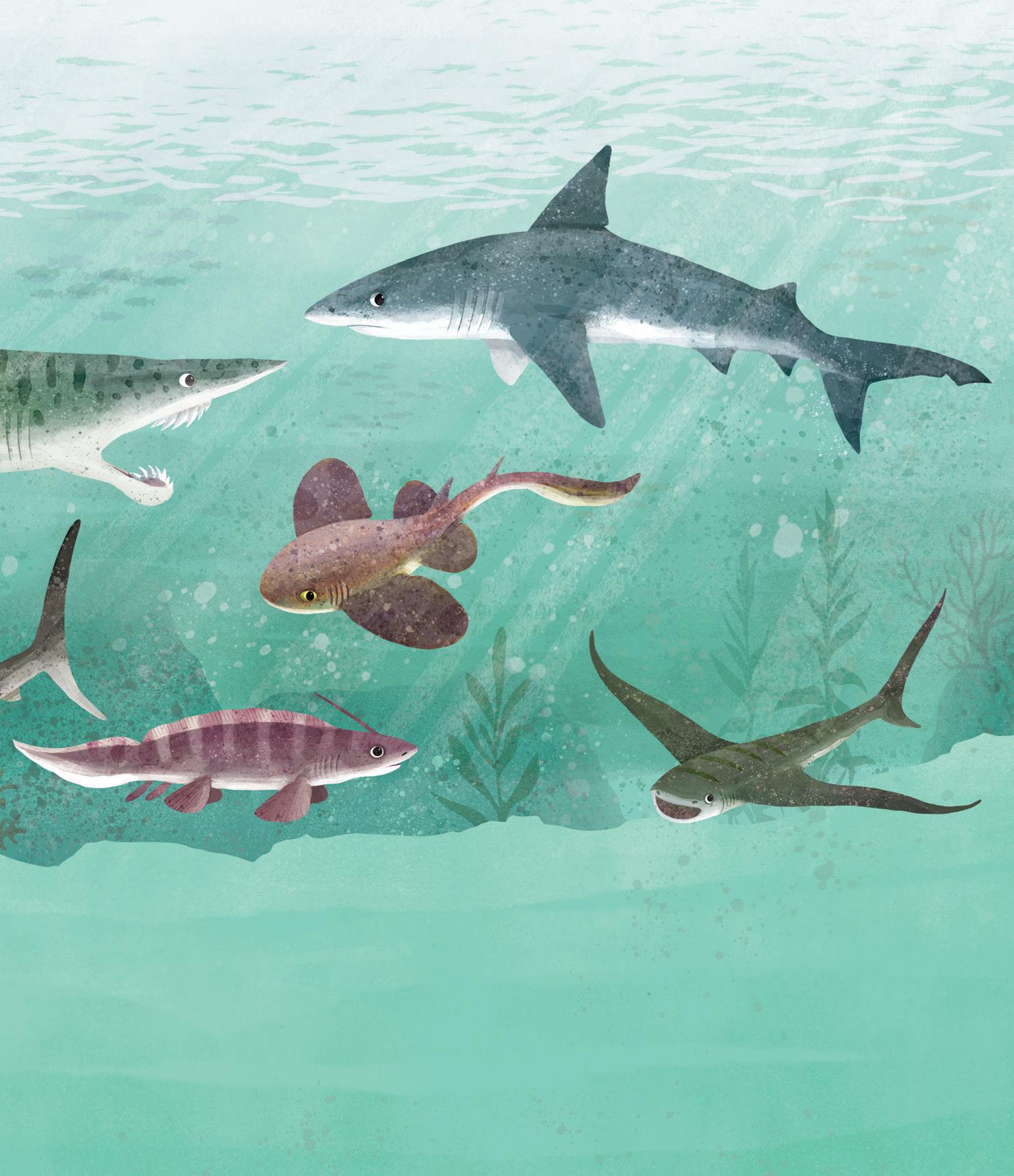
Although sharks like SQUALICORAX were incredibly similar to those alive today, the waters of the Cretaceous period still held some surprises. In 2021, palaeontologists described AQUILOLAMNA – a long-finned, plankton-eating shark that flapped its way through the oceans while the Tyrannosaurs wandered the land above.
All sharks are predators. Every single one of the 500-ish species hunts and eats other animals in their watery world. Their prey can be anything from the open buffet of marine snacks the oceans have on offer, depending on the shark’s particular tastes (see page 36), from octopus or clams to other, smaller sharks. But if a person was to enter that fishy habitat by, say, having a dip off a tropical coast, they’d find themselves on any predator’s menu, right? After all, most fish and other aquatic animals are super-speedy and tricky to catch in comparison to splashing, paddling humans.
The truth is that hardly anyone ever gets attacked by sharks. Sure, there are occasional incidents, but the numbers are incredibly small when you think about how many people swim in the sea, all around the world, all year long.
Humans swim around or near sharks much more than they realize – sharks just tend not to bother us when we’re in the sea. And, besides, the majority of sharks are pretty small and wouldn’t be interested in great big lumbering prey like people.
But some sharks can handle human-sized prey: and it’s these species - like TIGER and BULL SHARKS, which are responsible for the few human deaths each year. It might be that these sharks occasionally mistake surfers and swimmers for floating prey that are a similar size to humans . . . like seals or turtles. Curious sharks first attack to get a taste rather than to kill, but unfortunately a taste-bite from a large shark can be lethal.

Let’s take a look at the numbers . . . In 2021, only 73 shark bites or ‘interactions’ were recorded around the entire world – and that’s about average for the number of incidents per year. Most of these were in the seas around the United States of America and Australia and, sadly, 11 of the people who were bitten lost their lives. But let’s put this in context. That number is for an entire year around the whole world, although these were enormous tragedies for those people and their families.
11 people around the world. This number actually starts looking very small when we start looking at other animals that are dangerous to people like . . . cows. Incredibly, twice as many people (22 on average) are killed by cows every year just in the United States of America, while bees, wasps and hornets kill about 62 people each year, again, only in the USA.
SHARKS
(KILLED 11 PEOPLE WORLDWIDE IN 2021)

(KILLED 22 PEOPLE IN THE USA IN 2021)
(KILLED 62 PEOPLE IN THE USA IN 2021)

(KILLED 50,000 PEOPLE WORLDWIDE IN 2021)
(KILLED 1 MILLION PEOPLE WORLDWIDE IN 2021)









Worldwide, snakes kill about 50,000 people each year, while the bacteria and viruses that mosquitoes carry cause over one million deaths in the same amount of time sharks kill 11 people.
So, the next time someone says that sharks are dangerous, just remind them to look out for cows, mind their feet in snake country, and to stock up on insect repellent next time they’re on a hike . . .
